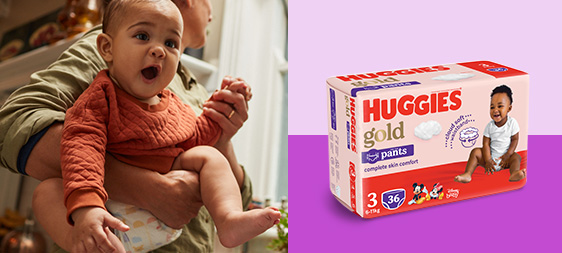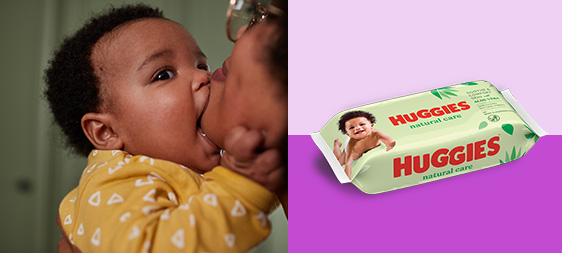Our handy reference table for common childhood illnesses will help you work out your best course of action when your child is unwell: Illness Symptoms Bronchiolitis Usually affects babies in their first 12 months Viral respiratory infection Passes via coughing, sneezing and direct contact Runny nose, sneezing and fever Cough develops over a couple of days Wheeze on outward breath Difficulty breathing � laboured breath with chest rising more than normal Chicken Pox (Varicella-zoster virus) Highly contagious Spread through direct contact with person or lesion or droplets from coughing or sneezing Contagious period from 1-2 days before the rash develops until all blisters have formed a dry scab Incubation period is 7-21 days after exposure Avoid contact with pregnant women Fever, sore throat and headache An itchy skin rash over the whole body Rash-small blisters surrounded by pink areas Blisters will gradually burst and form a scab (about 5 days after appearing) Blisters may appear in the mouth Common Cold Upper Respiratory Tract Infection (URTI), usually caused by a virus Sneezing & coughing Spreads through direct contact Contagious until symptoms clear Any or all of: Blocked or runny nose Sneezing Sore throat Cough Headache Fever Conjunctivitis (Pink Eye) Inflammation of the membranes in the eye Caused by a viral or bacterial infection Highly contagious and can be passed via hand to eye contact or via cloth to cloth Incubation period is a few days up to a week Discharge from the eye, white or yellow in colour Eyes may be stuck together after sleeping Eyes may be itchy and irritable Eyes may appear bloodshot Constipation Breastfed babies rarely become constipated- it is not unusual to have 7 days between bowel motions More likely to occur in bottle-fed babies Older children can be constipated after the introduction of new foods as their bodies adapt to it Infrequent stools Difficulty passing stool Hard pellet-like stools Pain on passing a stool and occasional bleeding from the rectum Cough Usually part of, or follows on from, an URTI Contagious until symptoms clear The cough may be dry or produce mucous Similar to a cold Look for signs of whooping cough, croup, bronchiolitis or pneumonia Cradle Cap An oily secretion from the scalp Yellow crust or scale on scalp Usually doesn�t cause discomfort to baby Croup A viral illness causing acute inflammation of the upper respiratory tract Commonly affects young children and babies Involves airways becoming swollen and narrow Passed via coughing and sneezing Symptoms peak on 2nd or 3rd day General cold symptoms at first Barking cough (sounds like a seal) Hoarse voice Breathing is noisy Symptoms are usually worse at night Severe symptoms are unusual and include: Difficulty breathing High fever and drooling Dehydration Can occur very quickly in babies as a result of repeated vomiting, diarrhoea, heat stroke or heat exhaustion Listless and apathetic Eyes and fontanelle will appear sunken Few or no tears when they cry Fewer wet nappies Skin will remain gathered after being pinched Dry mouth with increased thirst Diarrhoea A viral or bacterial infection that can be passed via hand to hand contact Cramps and abdominal pain Loose and explosive bowel motions Frequent watery motions May be discoloured Possible dehydration Ear infection Usually a viral infection with occasional secondary bacterial infection Often follows a cold (URTI) Inflammation of the lining of the middle ear Ear pain Fever Irritability Loss of appetite Febrile Seizure These occur in a small percentage of babies and can be brought on by a sudden rise in temperature Most febrile seizures occur between the ages of 6 and 36 months Loss of consciousness or awareness Body becomes stiff or floppy Body begins to twitch or jerk Your child may be disoriented or drowsy after the fit has finished Fever May be caused by a viral or bacterial infection Young babies can have a fever from being overheated Occasionally follows routine immunisations Your baby is considered to have a fever when the temperature rises above 37.5�C High temperature is considered to be over 39�C Baby may feel hot to touch Baby may shiver and look red or flushed Rapid rise in temperature or prolonged high fever may cause a febrile convulsion Flu (Influenza) A viral infection spread by: Sneezing and coughing from an infected person Direct contact with an infected person Symptoms develop 1-4 days following exposure and may last for 7-10 days Contagious for up to 5-7 days after symptoms appear Symptoms may include: High Fever Chills and sweating Headache and sore throat Weak and tired Muscle and joint pain Loss of appetite Cough Gastroenteritis This can be a viral or bacterial infection Can be a serious disease in young babies due to dehydration Vomiting and diarrhoea Abdominal pain and cramps Fever Can result in dehydration May have blood in the stool Impetigo (School sores) A bacterial skin infection Highly contagious via direct contact until sores have dried completely (around 3-5 days) Bacteria usually enters the skin via a cut, insect bite or other sore Begins as small blisters These burst and form a crust Meningococcal Meningitis Highly contagious Acute bacterial infection Life threatening Inflammation of the spinal cord and brain Followed by septicaemia (blood poisoning) Passed by coughing, sneezing, kissing, and sharing drinks and food Not all of these symptoms may be present: Severe headache Fever (may not respond to Paracetamol) High-pitched cry Fatigue, drowsy, lethargic Stiff or painful neck Sensitivity to light Fontanelle bulges Convulsions More serious symptoms: Vomiting Cold hands and feet Cold shivers Severe aches or pain in the muscles, joints, chest or abdomen Rapid breathing Diarrhoea At later stages, a pinprick or purple bruise-like rash Molluscum contagiosum A viral infection Highly contagious via contact with infected person or contaminated objects Scratching or rubbing spreads the virus to the nearby skin Small raised spots Typically have a small indentation at the top Spots will usually last for about 6-12 months Non-Specific Viral Rash Caused by a viral infection Appears as a red rash across the body Usually lasts only a few days May be accompanied by other symptoms Pneumococcal Meningitis A bacterial infection passed via sneezing , coughing and saliva transfer Vaccination can help prevent the risk of infection Any or all of: Fever High-pitched cry in babies Sensitivity to bright light Vomiting Headache Stiff neck Bulging fontanelle in infants Joint and/or muscle pain Irritability Drowsy/disoriented Loss of consciousness Roseola A viral infection High fever for about 3 days Loss of appetite Swollen lymph glands in the neck Followed by a rash (pink/red spots) all over the body Rubella (German Measles) A viral infection Can have serious consequences if a pregnant woman comes into contact with Rubella for her developing baby Highly contagious via coughing or sneezing or direct contact Infectious period is 7 days from before onset of the rash and untill at least 5 days after the onset of the rash Incubation period is 15-20 days Mild fever Mild rash on body, neck and face Joint pain Swollen glands Headache, cough, cold Threadworm (Pinworm) A parasite infestation Infection occurs after ingesting a pinworm egg Worm eggs can survive outside the body for up to 3 weeks, usually in dirt or dust Itchy bottom Disrupted sleep and daytime irritability Worms may be visible in stools or from the anus at night Thrush A fungal infection Caused by the abnormal growth of yeast (Candida albicans) Infection can be transmitted by direct contact Oral Thrush: Sores inside the mouth A build-up of cottage cheese-like discharge from the mouth. Topical rash: Often occurs in the nappy region and folds of the skin nearby Distinct red inflamed rash with sharply outlined edges Smaller spots (pustules) may be present outside the main rash area Urinary Tract Infection (UTI) A bacterial infection Occurs more frequently in girls Untreated UTI can cause damage to the kidneys To prevent infection always wipe from front to back during a nappy change Unexplained high fever Increased urine output Painful or burning sensation with urination Offensive odour Older children may have daytime and night-time accidents Can only be confirmed by a urine analysis Vomiting Usually caused by a viral infection The main concern for an infant or child suffering from vomiting is dehydration Stomach cramps followed by an episode of vomiting Often accompanied by diarrhoea More serious symptoms that need urgent medical attention: Vomiting after a head injury Vomit is bright yellow or green Vomit contains blood Constant stomach pain High fever is present Child seems confused and is difficult to wake Dehydration is evident Whooping Cough (Pertussis) A bacterial infection Highly contagious to an un-immunised child Spread via sneezing, coughing and direct contact Most infectious period is from onset of symptoms to 2 weeks after the onset of the cough i.e. approximately 21 days Incubation period is commonly 7 � 10 days after contact with an infected person Initial symptoms are similar to a common cold Cough develops where child may have a coughing spasm lasting for a minute or more Characteristic �whooping� sound as the child tries to draw breath Difficulty breathing Face may turn red or blue May vomit after an attack For advice and specific treatments, visit your local doctor or medical practitioner.
EmptyView

We’re excited to be a part of your baby's journey! We’ll keep you up to date with your little one’s development, and so much more.
We’re excited to be a part of your baby's journey! We’ll keep you up to date with your little one’s development, and so much more.
Name should not be blank
Oops, your email address is missing here!
A valid email must be entered
In order to complete your registration, you need to accept all the relevant checkboxes as per POPIA compliance.
Your registration is successful!
Sorry, it was not possible to complete the registration. Try later!



























